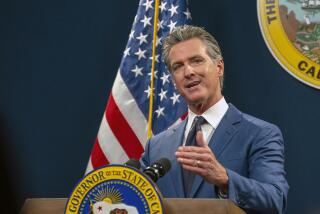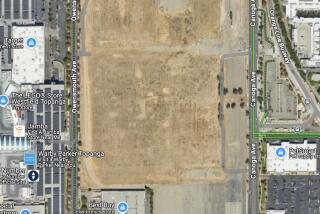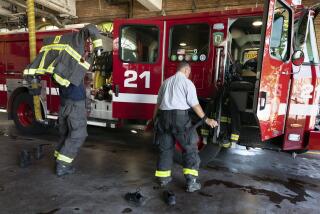Testing finds traces of carcinogen in bath products
Some shampoos and other bath products still contain traces of a cancer-causing petrochemical that federal health officials have expressed concerns about for more than 20 years, according to test results announced Thursday by environmental activists.
All 18 children’s and adult products tested in a laboratory contained 1,4-dioxane, and three had concentrations that exceeded the Food and Drug Administration’s recommended limit, says the Campaign for Safe Cosmetics, a San Francisco-based coalition of eight national environmental and health advocacy organizations.
For the record:
12:00 a.m. Feb. 16, 2007 For The Record
Los Angeles Times Friday February 16, 2007 Home Edition Main News Part A Page 2 National Desk 1 inches; 66 words Type of Material: Correction
Cosmetics guidelines: An article in Section A on Feb. 9 about traces of a carcinogen in some bath products quoted a federal report that said some cosmetics may contain higher levels of 1,4-dioxane than are recommended by the FDA. The federal report is erroneous. The FDA has not made any recommendations for the chemical in cosmetics, although it has set guidelines for a few other products.
The chemical is not an additive, but an unintended byproduct during manufacture of some formulations.
The tests, conducted by a Santa Fe Springs laboratory, were commissioned by David Steinman of Topanga, publisher of Healthy Living magazine, and included in his new book outlining steps that consumers can take to protect the environment.
According to the environmental group, the highest concentrations, 23 parts per million, were detected in Clairol Herbal Essences Rainforest Flowers Shampoo and Olay Complete Body Wash With Vitamins, both made by Procter & Gamble. The highest in a children’s product was 12 ppm, in Hello Kitty Bubble Bath, sold by Kid Care, a division of Cosmetic Essence Inc.
In 1985, the FDA asked the cosmetics industry to voluntarily limit the chemical to 10 ppm. But there are no standards governing it and no testing requirements.
Fifteen of the 18 were at or under the 10 ppm recommendation, with the lowest amount, in Mr. Bubble Bubble Bath Gentle Formula, reaching 1.5 ppm.
A probable human carcinogen, 1,4-dioxane penetrates skin, although much of it evaporates when used, according to FDA documents.
Cosmetics industry representatives say the amounts of the chemical detected in the products are safe, especially since they are mainly in shampoos and other products that are quickly washed off.
“Consumers should not be concerned about the levels in this data,” said John Bailey, science director of the Cosmetics, Toiletry & Fragrance Assn., an industry trade group.
The levels are lower than they were historically, Bailey said, so “it shows the manufacturers are doing their job” and removing the petrochemical.
The FDA says in its cosmetics handbook that the problem was first reported in 1978 and that companies can strip the petrochemical from products “without an unreasonable increase in raw material cost.”
“However, some cosmetics, detergents and shampoos may contain levels higher than recommended by FDA,” says a report by the federal Agency for Toxic Substances and Disease Registry, part of the Centers for Disease Control and Prevention. The agency advises consumers to avoid products listing the surfactants PEG, polyethylene, polyethylene glycol, polyoxyethylene, polyethoxyethylene or polyoxynolethylene as ingredients unless the company has shown that they are not tainted with 1,4-dioxane.
The chemical was declared a carcinogen under California’s Proposition 65, which requires warnings on products that pose a certain cancer risk. But state officials have not reviewed whether any products contain enough to trigger such warnings.
More to Read
Sign up for Essential California
The most important California stories and recommendations in your inbox every morning.
You may occasionally receive promotional content from the Los Angeles Times.










